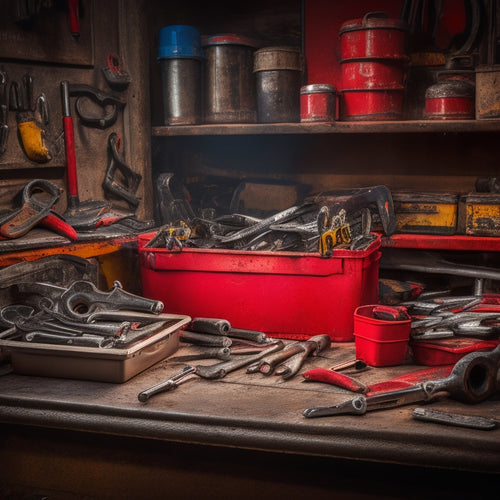
Master Manual Dexterity With Pegboard Challenge
Share
Mastering the pegboard challenge is a proven way to greatly enhance manual dexterity, an important skill vital for various everyday activities and professional pursuits that require precision and coordination. To excel, it is vital to understand the test's layout, practice peg manipulation, and improve hand-eye coordination. Familiarize yourself with the scoring system and techniques to optimize performance. Analyze your results to identify areas for improvement, and focus on refining your skills. By learning more about the pegboard challenge, you can discover the secrets to achieving exceptional manual dexterity and unlocking your full potential.
Key Takeaways
• Familiarize yourself with the pegboard's layout and peg manipulation to improve performance.
• Practice grasping, releasing, and aligning pegs with slots to develop hand-eye coordination.
• Understand the scoring system to assess manual dexterity accurately and identify areas for improvement.
• Analyze speed, accuracy of peg placement, and patterns of errors to refine your technique.
• Mental and physical preparation can optimize performance and master manual dexterity.
Understanding the Pegboard Test
The Grooved Pegboard Test, a widely used assessment tool, evaluates an individual's visual-motor coordination and fine motor skills by requiring the manipulation of pegs with a key to match and insert them into randomly positioned slots on a 25-hole pegboard.
This test offers numerous pegboard benefits, including the ability to identify areas of manual dexterity deficiency and track progress over time. There are various test variations, including adaptations for different age groups, allowing for a thorough assessment of manual dexterity.
The test's standardized administration and scoring procedures guarantee reliable and valid results, making it a valuable tool for occupational therapists, researchers, and educators seeking to understand and improve manual dexterity.
Preparing for the Challenge
To master the Grooved Pegboard Test, it is essential to familiarize yourself with the pegboard's layout and the manipulation of pegs with a key, ensuring a smooth and efficient testing experience.
Before starting the challenge, practice techniques such as grasping and releasing the pegs, as well as aligning them with the slots, to improve hand-eye coordination. This will help you develop muscle memory and fine-tune your motor skills.
It is also vital to understand the instructions and scoring system to avoid any confusion during the test. By preparing yourself mentally and physically, you can optimize your performance and achieve the best possible results.
Scoring and Interpreting Results
With a solid foundation in pegboard manipulation established, the next step is to understand the scoring system and interpret the results to accurately assess manual dexterity. Accurate scoring and interpretation are vital in evaluating progress and identifying areas for improvement.
Interpreting scores involves calculating the total number of pegs correctly placed within the time limit, with higher scores indicating better manual dexterity.
Analyzing performance involves examining the speed and accuracy of peg placement, as well as any patterns of errors or difficulties.
Frequently Asked Questions
Can the Grooved Pegboard Test Be Used for Individuals With Disabilities?
The Grooved Pegboard Test can be adapted for individuals with disabilities through accessible therapy modifications, ensuring inclusive design principles are applied to accommodate diverse needs, promoting equal opportunities for assessment and skill development.
Are There Any Cultural or Language Adaptations Available for the Test?
When evaluating manual dexterity across diverse populations, cultural variations and language barriers can impact test results; adaptations, such as translated instructions and culturally sensitive peg designs, are essential to guarantee accurate and fair evaluations.
Can the Test Be Administered in a Group Setting or Only Individually?
"A thousand hands make light work, but can they make precise movements in a group setting? While individual administration is ideal, group testing is possible with careful proctor training, minimizing distractions and ensuring each participant's attention to the task at hand."
Is It Necessary to Calibrate the Pegboard Before Each Use?
To maintain Pegboard Precision, calibration before each use is vital to prevent Calibration Errors, which can greatly impact test results; thorough calibration is essential to uphold the test's validity and reliability in evaluating manual dexterity.
Are There Any Specific Storage and Maintenance Recommendations for the Pegboard?
As the ancient Greek physician Galen once said, 'A good physician must also be a skillful mechanic.' Similarly, proper care of the pegboard guarantees precise assessments. Regularly clean the pegboard with a soft cloth and mild soap, and store it in a protective case or dry, cool environment.
Related Posts
-

10 Best Tool Boxes for Every Budget and Job
You're looking for a tool box that fits your budget and job requirements. Whether you're a DIY enthusiast, electricia...
-

Top Wrench Tool Box Sets for Every Mechanic
You're looking for high-quality wrench tool box sets that cater to your specific needs as a mechanic. From top-rated ...
-

Must-Try Bike Storage Ideas in Small Spaces
You're tired of sacrificing precious living space to store your bike, especially in small homes where every square fo...


